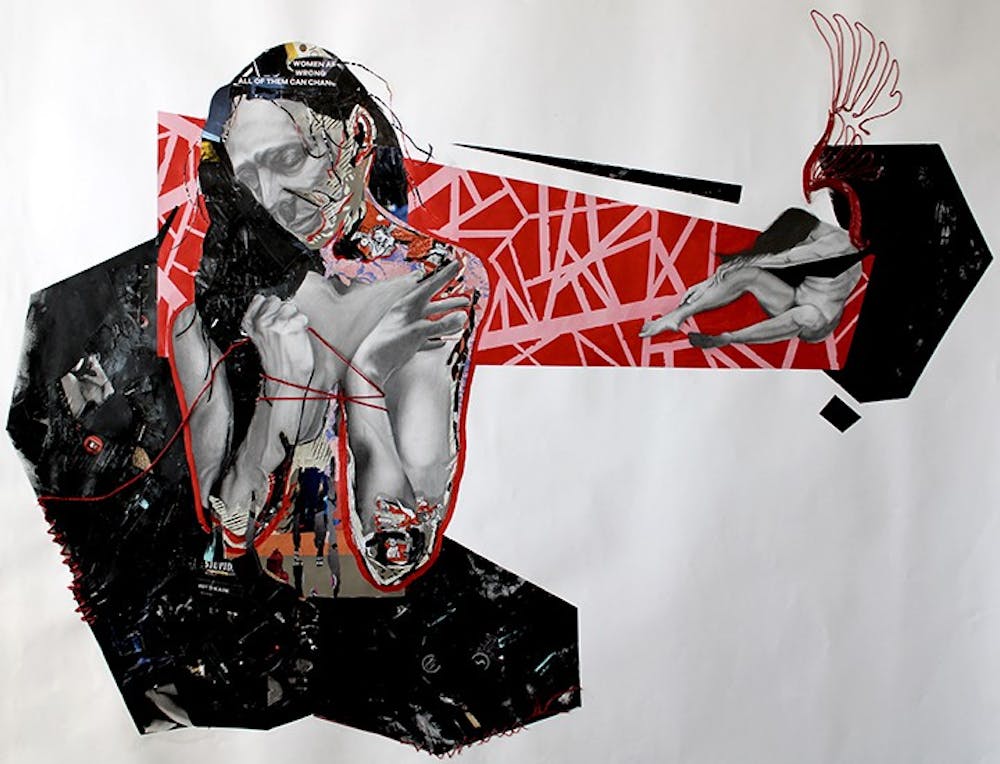Are you a conscious listener? If not, consider how much meaning can be derived from open ears and heart when talking from day to day.
Adjunct professor for the arts Aldric Morton uses language "from all walks of life" as inspiration, translating conversations into images.
Knowing that somebody is listening, that you are not alone in this world and that someone realizes what is on the outside doesn’t always represent you are reasons Morton draws inspiration from others as a professional artist.
"They become their story, and I just see them in a different light," he said. "I see their strength. I see their sadness, their weakness; you know, their joy. I see it all."
Morton said there are two major themes in life: pain and joy. It's a "massive honor" for him to break down the barriers of each side and be a part of those feelings in the moment and within his art.
Morton said he wants to make sure people are heard because many "feel like their voice is small."
Associate professor at the School of Visual Art and Design Sara Schneckloth said Morton has honed in on storytelling through his art, using intricate visuals to reveal his interpretations. His ability to listen is important to leaving the conversation, and art, open-minded.
This process is shown naturally through his art. Morton said he would be "lost" without the stories everyone has to share.
Professor of art and head of printmaking Mary Robinson said the exhibition is filled with mixed media works and "intimate portraits."
The mixed media includes his jumble of informations, words, images and values all gathered from discussion. As seen in the images, the literal layering and stitching of the art can metaphorically represent the layers of the conversation.

“So, that act of tearing something is actually a symbol of revealing, of someone revealing themselves," Morton said. “The thread is me, essentially, tying myself or stitching myself in that person's life, even if it's just for that moment, taking that time and trying to allow myself to connect and to relate to what they are talking about."
These artistic elements are each unique to the story he is trying to tell.
“It's really about solid, meaningful communication with another human being, as opposed to just quick, social media, email, tweets that we've kind of become accustomed to,” Robinson said.
Think of a social media page with no context, just a picture with the meaning lost in translation. Morton said he aims to restore meaning on his own page, putting their story into the physical world rather than the digital one.
Realism drawing is important to Morton’s work. It makes each piece recognizable to its owner and the moments they shared together. Including the face or characteristics of the subject brings the story to life.
The exhibition is filled with narratives. Schneckloth said each individual piece comes together in the gallery to generate thought, asking the viewer, "How do you see yourself reflected in these images? How do you understand them?"
“There’s this level of fragmentation, and I think there’s a degree of optimism in his work, too, that fragments can make a whole,” she said.
Robinson said Morton is a role model to his students and colleagues alike. According to her, he's respectful, patient, supportive and observant.
“He’s really a master at composition,” Robinson said.
Having known him for a decade now, Schneckloth said she can’t wait to see him explore personal, global and national conversations as he grows and works without fear.
His MFA exhibition, "Empathetic Translation," is displayed virtually.
Correction Sept. 21, 2020: A previous version of this article incorrectly stated Mary Robinson said "she can’t wait to see him explore personal, global and national conversations as he grows and works without fear." This statement was said by Sara Schneckloth.

